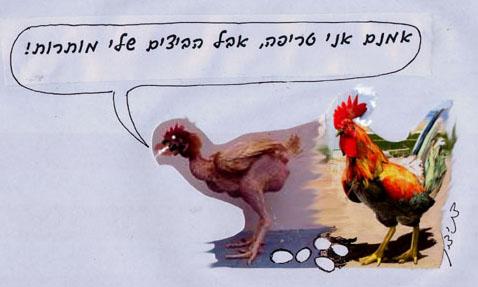
Some of the sages opine that hens which have defects or illnesses (and which are forbidden as tereifah) have the ability to lay eggs. Some of the sages think that such a hen cannot lay eggs. According to those who think the hen can lay eggs, the firs egg laid after the hen’s illness is forbidden because the hen and its eggs were forbidden as tereifah at the same time. But eggs laid afterwards are permitted for consumption. The scholars asked: If the eggs of a tereifah hen are permitted, why did the early sages forbid these eggs? They said “The egg of a tereifah is forbidden.” Answer: The early sages forbade eggs which were unfertilized, since the egg was formed by the hen’s warming itself on the ground and not by the additional agent of the rooster. It was formed entirely by the hen which is forbidden for consumption, and so the egg, too, is forbidden. The fertilized egg, though, has as a partner in its the creation the rooster, which is permitted for consumption, so the egg is permitted as well. (Practical Halacha rules that the tereifah hen cannot lay eggs. This implies that if she did lay eggs she is not tereifah, so the hen and the eggs she lays are permitted for consumption.)
(Babylonian Talmud, Tractate Chulin 57b-58a)
